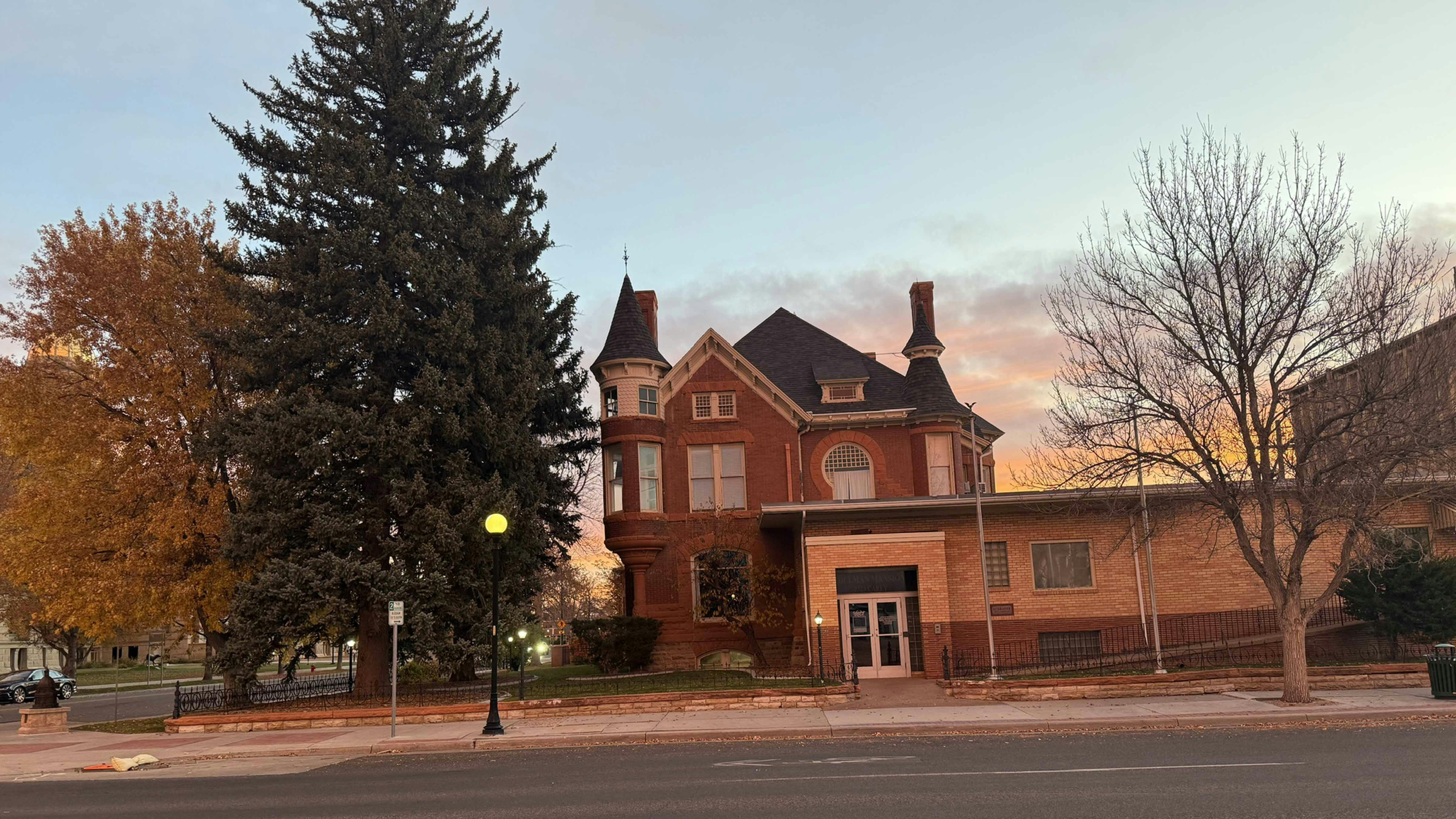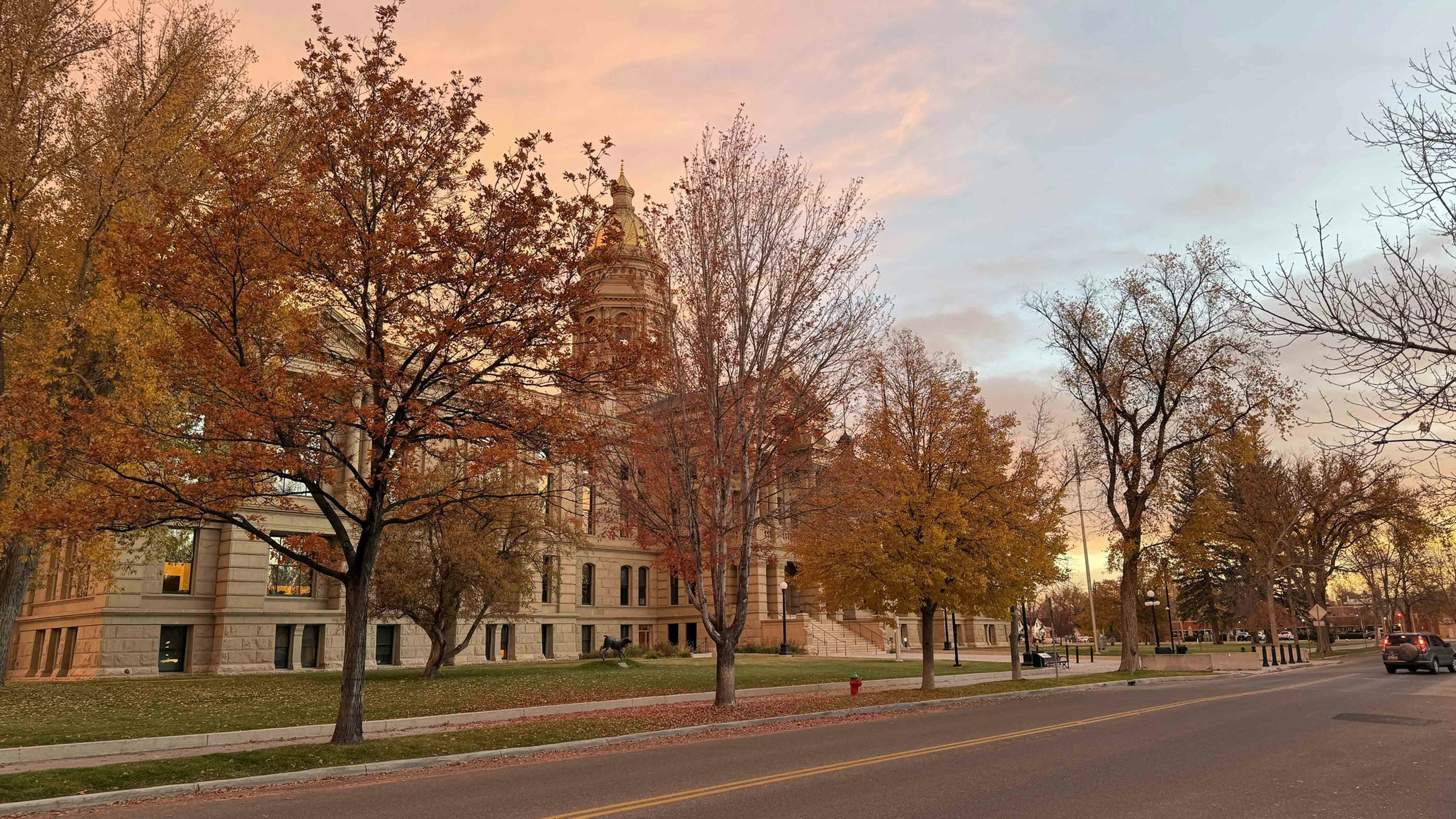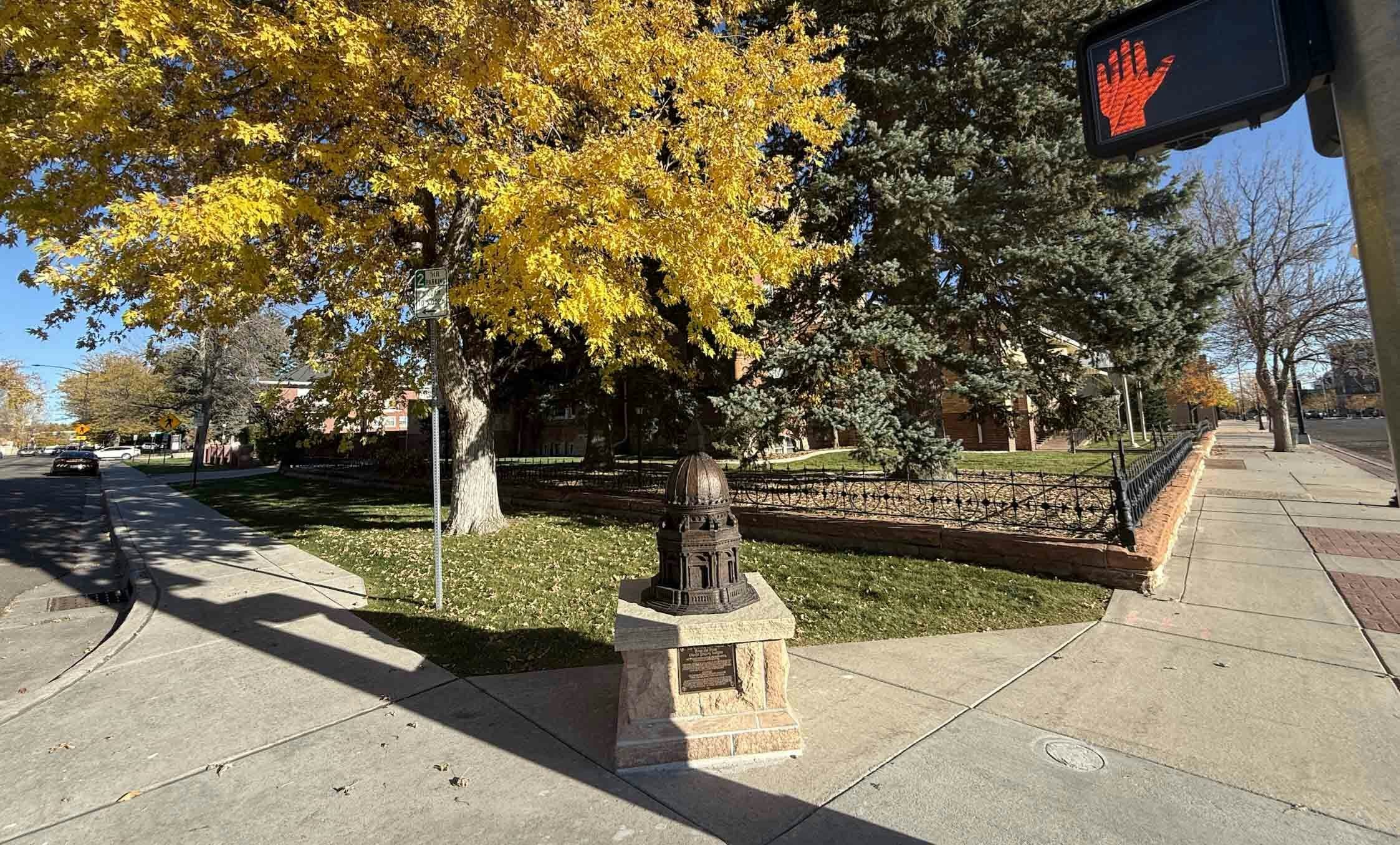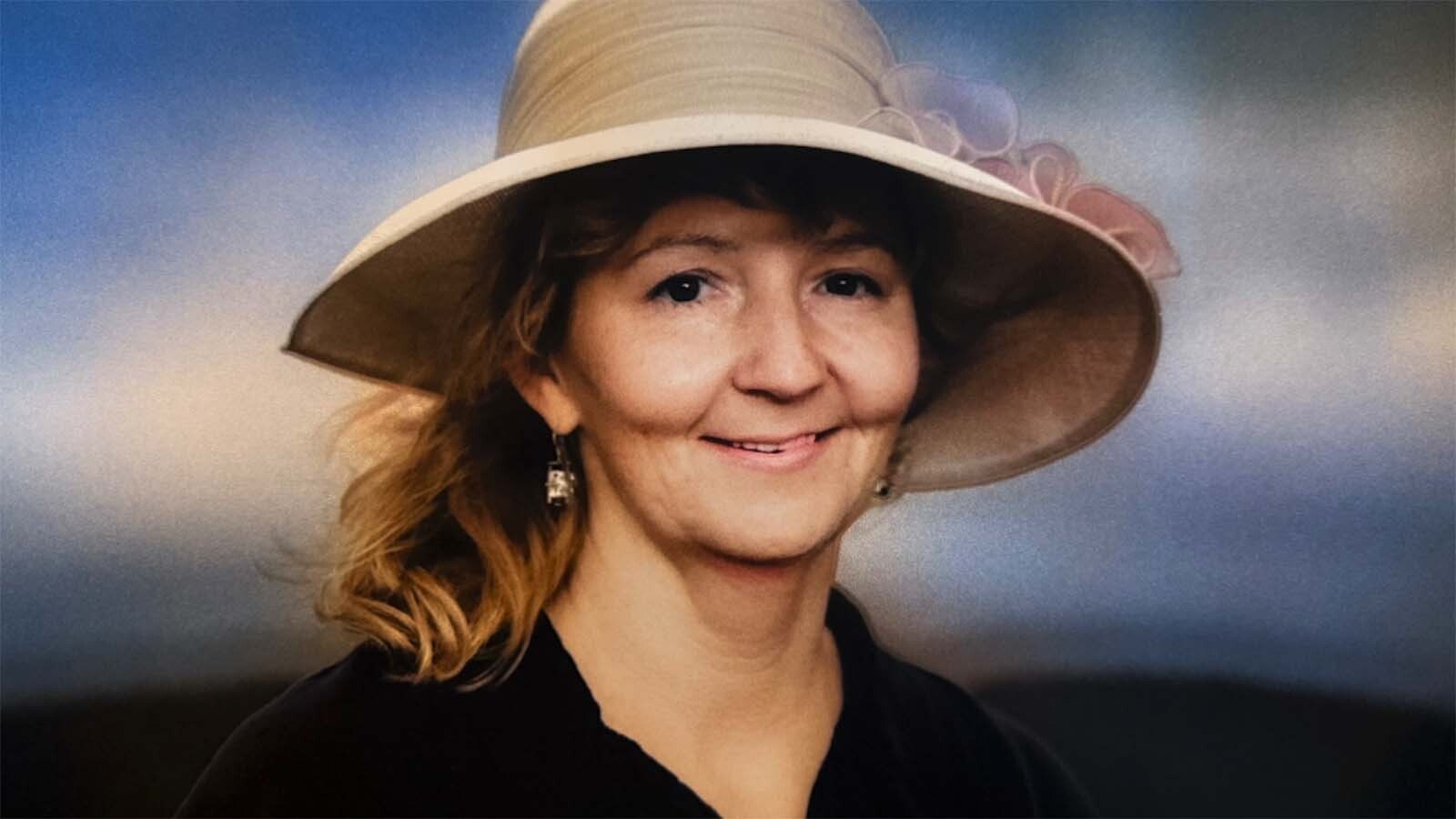Anthony Apollo, director of the Wyoming Stable Coin Commission, is a textbook crypto technocrat.
His testimonies in public hearings are algorithmically precise, and his statements march forward in a straight line with the logical clarity of a digital ledger.
He speaks in a measured tone that pairs well with his rectangular spectacles and bald head, shaved as smooth as a touch screen. You could imagine his closet rack lined with identical blue suits.
He thrives on clean details, hard data, and the measurable universe — which is why it’s so strange to learn he’s easily spooked by ghosts.
Then again, he works in a former coroner's office in a building that used to house a morgue, and there’s reason to believe some of those former occupants never got the notice to vacate.
“One evening late at night, I’m the only one in the entire building, and all of the sudden I could hear what sounded like a wrestling match in the attic right above my office, like people were rolling around on the floor, grunting. I’m thinking, what the hell is that?” Apollo said.
Soon he'd have an answer — sort of — but it wouldn’t necessarily put him at ease.
Idelman Mansion
Apollo works in a building known as the Idelman Mansion at 2323 Carey Avenue across from the state Capitol, the long-ago residence of a Polish immigrant turned Cheyenne liquor baron named Max Idelman.
It was sold after his death in the 1920s and was later repurposed as a funeral home.
It’s since come into state ownership and now functions as office space for government officials, bringing more than century-old architecture into juxtaposition with modern pursuits like digital currency.
But its most stark juxtaposition is between the living and the restless dead.
“There are things that have happened that I have no explanation for,” said Apollo. "I’ve shared with other people who have also experienced them. Nobody has any explanation for them."
St. Mary, Protect Us
In old photos, this Queen Anne mansion stands like the architectural embodiment of the phrase “whodunit.”
It’s a multi-story Victorian with delicious asymmetry, ominous vertical elements and the type of turreted bay windows you're compelled to double-take, because you could swear you’d just seen the stricken face of a woman peering down from the widow’s watch.
But as with most apparitions, they're gone before you can get a second glance, as Apollo learned when he investigated a ruckus in the attic.
“When I got to the top of the stairs, the door to the attic cracked open just a little bit. I fully opened it, and it was pitch black,” he said. "I turned on my cellphone flashlight and poked around every nook and cranny. I didn't find anything.
“I put up St. Mary in front of my door, and that kept things safe … for a little while.”
Footsteps
Buck McVeigh, former chief of staff for Gov. Mark Gordon, had an office tucked in the back on the mansion’s main floor, where he often worked late into the night until he was the only one left in the building — or so he thought.
He recalls how sometimes he heard footsteps overhead, only to find the upper levels empty upon investigation. He explained that interior motion-sensor lights could activate without explanation.
The really eerie place, though, is the basement.
In the 1920s, the building was bought from the Idelmans by the Schrader family, who later converted it to a funeral home, complete with an embalming morgue in the basement.
McVeigh can’t help wondering if some of the funeral home’s clients may be stuck in the veil between worlds.
“I was there past 10 o’clock one night, researching a bill, and I knew I was the only one in the building,” he said. "Out of nowhere I heard what was unmistakably a door in the basement slam shut. I started saying, ‘Hello? Hello? Who’s there? Who’s there?’”
He walked down the hall, stood at the top of a narrow stairway, and repeatedly asked, “Who’s there?”
But only the cold, empty echo of his own voice answered back.
“Then I noticed the light on in the basement. I went down, but there was not a soul down there,” he said.
McVeigh said he was out of that mansion quicker than you can say, "They’re heeeere …"
“I’ve never been so scared in my life,” he said.
If there really are poltergeists in the Idelman Mansion, you get the sense they prefer to target government workers.
Trapped In The Turret
Mary Kay Hill, former policy director to Gov. Matt Mead, worked on the second floor of the mansion in a corner office with high ceilings, a fireplace and a turreted bay window with a view of the state capital building.
There seems to be a theme here — working for the Wyoming governor can land you an office in a haunted mansion with a morgue in the basement.
As one of the mansion's design oddities, its bay turret has a door and was fully enclosable, like an escape pod. Although in Hill’s case, it became a pod of entrapment.
Shortly after moving in, a colony of bees relocated their hive under the window’s eave. Soon, the insects burrowed through the soffit and found a way into her office, which spelled trouble for a colleague of Hill’s who had a bee allergy.
“I saw the bees coming in and I thought, 'Oh gosh, we can't have that,’” she said. "I went in to swat them and I closed the door behind me. After I’d taken care of the bees, I realized I was locked in the turret.
“I was banging on the windows, but people walking past on the street couldn't hear me. I was banging on the door, but my colleagues couldn't hear me. I didn’t want to be the one who broke the antique windows to get out, but it started getting really hot in there.”
This type of enclosure is what’s known by architects as a “widow’s watch.”
It originates with coastal castles and signifies the place where spouses scanned the horizon for the return of their husbands at sea — much to their disappointment, which is why it's not called a wife’s watch.
Although the word buzzing through Hill’s head was not widow, it was widower.
“I don’t know how long I was trapped in the turret, but it felt like hours,” she said, adding that at long last a colleague finally heard the pounding and came to set her free.
Architecture And The Occult
The Idelman Mansion was built in 1893, three years after Wyoming achieved statehood, and it's one of only a handful of remaining homes from the Cheyenne’s historic Millionaires Row district.
Set apart from other homes on the row, here was an audacious design that blended architectural elements. It combined features like Romanesque spires, Gothic keystones and archways, and eclectic Victorian elements like a Juliette balcony.
“Why the Idelman Mansion is so unique is because the architect J.P. Julien blended architectural styles, which was so rare back then. Nobody did that,” said Jake Schrickling, construction manager for the Wyoming Department of Administration and Information (WDAI), who has an office in the mansion.
“Other buildings of the era, they all have a very distinct architectural style,” he said. "Well, look at the Idelman Mansion, it's all over the place.”
The ambitious design came with a price tag. With a construction cost of $55,000 in 1883, it was more than double the expense of any other mansion in Millionaires Row, said Schrickling.
The interior is equally eclectic, with the kinds of nooks, pockets and individualized spaces that call to mind the story game “Clue.”
Pilastered brick fireplaces invoke the sound of crackling wood, and the image of secret notes disappearing in a flame.
Room doors swing open on brass hinges that are intricately engraved, as if with symbols of the occult.
Elsewhere, heavy pocket doors slide silently shut on quiet studies where mysterious things can happen out of sight.
“When I first started working here, there was no way I'd stick around after dark,” said Jaye Wacker, information officer for WDAI. "I just wouldn't.
"I’d come in here once to get something after hours, and I was going to use the restroom but then I said, ‘I'll go in my pants before I stay in here a minute longer.’"
The Idelmans were known socialites and held regular galas at home in an area on the third floor known as the ballroom, though many speculate the ballroom occasioned much more than cocktail parties.
It’s said that the ballroom also served as a synagogue for Cheyenne's small Jewish population.
When the mansion was renovated in the 2010s, playing cards from the 19th century were discovered in the ballroom walls.
Whose Spirits Are They?
The mansion's current tenants all seem to have their own theory.
Brittany Bannister, who works the front desk, believes the Idelmans are the undead in question.
McVeigh is inclined to believe they’re a product of the former morgue.
“I don't know why there would be some presence in there, so-called haunting the building,” he said. "Unless, maybe there’d been someone in a coffin that wasn't actually dead yet, but died there on premises."
McVeigh’s own father, in fact, was processed through the Schrader morgue after passing from lymphoma in 1963 — though McVeigh doesn’t believe the haunting is paternal.
“I believe my father died peacefully and that he is at peace in the next realm,” he said.
Others have simply chosen not to believe in the mansion's so-called hauntings, including Wacker.
“The longer I've worked here, the more I just see it as a really cool old house where they happened to bring dead bodies, [because] the death trauma where they might haunt is somewhere else, the body is at peace by the time it had come here,” Wacker said.
‘There's A Lot More That Happens Around Us Than We Pick Up’
Apollo, the crypto technocrat, has a corner office wedged between a staircase to the attic and a gutted dumbwaiter shaft, which was presumably used to move coffins and bodies up from the morgue, he said.
“It’s just this giant hole behind the door,” he said. “I put a little coffee table in front of that door, and a Post-it note that says, 'DON’T OPEN.'”
Perhaps in response, almost as if to mock him, he received a different safety warning in return. It happened about two months ago on a late night while preparing for a commission meeting.
“I was preparing for a commission meeting, which meant I was going back and forth getting prints from downstairs,” he said. "Point being, I'd been in and out of my office a dozen-plus times between 10 p.m. and about 2:15 a.m. Suddenly, I step out of my room, and there is a yellow placard that says 'CAUTION: WET FLOOR' literally inches from my door. That hallway is carpeted.
“I was the only one there, and I’d been making dozens of trips in and out of my office, so that was my cue to pack it up and get the heck out of there before anything else happened.”
St. Mary, apparently, can only do so much.
Apollo's exposure to supernatural phenomena is not exclusive to the mansion. He’s had experiences even more jarring and inexplicable in homes in Connecticut and New York, where he grew up.
To his mind, the supernatural boils down to a person's level of attunement.
“I maintain a level of skepticism, generally speaking,” Apollo said. "I’m not chasing Bigfoot through the wilderness anytime soon. But I think there's a lot more that happens around us than we pick up, perhaps. More than we’re able to see and make sense of.”
Zakary Sonntag can be reached at zakary@cowboystatedaily.com.



































